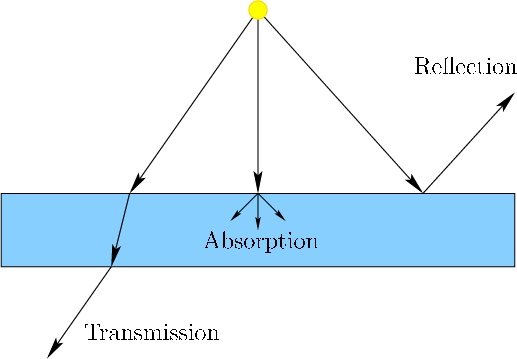
Next: A jumble of wavelengths Up: 4.1 Basic Behavior of Previous: Spreading waves Contents Index
 |
 |
As light strikes the surface of a material, one of three behaviors might occur, as shown in Figure 4.3. In the case of transmission, the energy travels through the material and exits the other side. For a transparent material, such as glass, the transmitted light rays are slowed down and bend according to Snell's law, which will be covered in Section 4.2. For a translucent material that is not transparent, the rays scatter into various directions before exiting. In the case of absorption, energy is absorbed by the material as the light becomes trapped. The third case is reflection, in which the light is deflected from the surface. Along a perfectly smooth or polished surface, the rays reflect in the same way: The exit angle is equal to the entry angle. See Figure 4.4. This case is called specular reflection, in contrast to diffuse reflection, in which the reflected rays scatter in arbitrary directions. Usually, all three cases of transmission, absorption, and reflection occur simultaneously. The amount of energy divided between the cases depends on many factors, such as the angle of approach, the wavelength, and differences between the two adjacent materials or media.
Steven M LaValle 2020-01-06